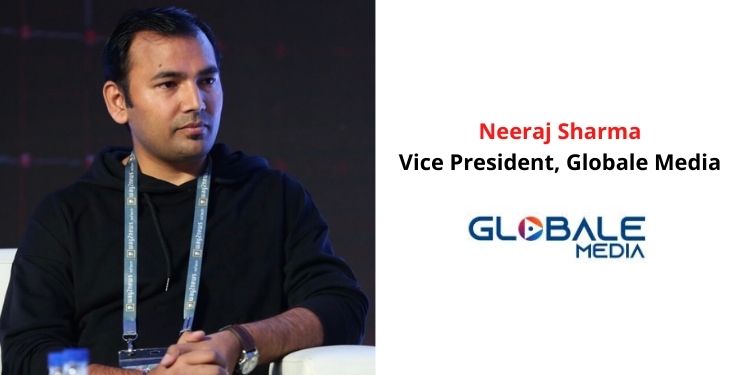Over two decades, the boom in mobile telephony has led to the evolution of mobile marketing. Starting with SMS (Short Messaging Service) marketing in the early 2000s, today it has become a multi-channel digital marketing strategy. With consumers shifting their focus and budgets to smartphones in recent years, marketers are creating omnichannel engagement with their target audience.
The ‘fast-paced’, ‘unpredictable’ mobile industry is changing constantly, and since the pandemic, it has evolved further giving rise to new trends for mobile marketers to adopt. Tracing some that will dominate in 2022.
App Store Optimization (ASO) to be a major focus
While choosing the right category for your App is the first step, App Store Optimization (ASO) ensures that the application is easily found on App stores. Simultaneously, it’s also necessary to localize your App, or a sizable chunk of your target audience is lost.
While SEO plays an important role in getting users to your App/site, optimizing content with the correct ad formats is equally important. Not to forget, your competition can help you considerably in understanding mobile user acquisition. Besides, depending on the activity of your competitor/s, you can alter your strategy. Take inspiration from The Godfather, in Vito Corleone’s words, “Keep your friends close, and your enemies closer.”
Organic user acquisition will be a priority
With the mobile environment becoming increasingly competitive, it’s become all the more important for App marketers to plan user acquisition in advance. Unlike earlier years, when building your own mobile App was enough, presently barely 0.01% of applications are managing to build an effective user acquisition strategy. That’s why user acquisition strategy plays a role of greater significance even before the App is developed.
Once the App is out, it’s very crucial to give users a seamless experience to retain them post-acquisition. Surveys that customers are put off by download issues and would appreciate fast downloads, a good and long battery life, and very little mobile traffic. Also, since any App developer’s ultimate aim is to make a profit, giving value to users is extremely critical and essential.
Mobile Commerce
In recent years, across the globe, people developed a habit of shopping using their smartphones. Experts are certain this will further grow with extensive mobile advertising and marketing. At the same time, social commerce is slated to be a big mobile commerce trend in 2022 with a digital marketing strategy aimed at reaching a target audience on their smartphones, tablets, and/or mobile devices via websites, email, SMS & MMS, social media platforms, and Apps. While Apps such as Facebook, Instagram, and Twitter are supporting digital marketing, more brands are expected to create social commerce experiences in the coming year. Eventually, mobile advertising budgets are expected to spread to these upcoming social commerce platforms in 2022. According to reports, about 55% of budgets allotted to digital advertising are now spent on mobile advertising, and this is slated to hit around 65% by 2022.
Influencer Marketing in Mobile Commerce
When it comes to influencer marketing, it may have caught on since the past few years and the mobile commerce space has been greatly impacted by this. From merely covering new launches by brands to driving the marketing and affecting brand sales, influencer marketing has come a long way. Therefore, the mobile industry is allocating budgets for this in their marketing plan. The use of smartphones has gone up massively in recent years and is only slated to rise further. Besides, there has been a boom in streaming media as well and today consumers want audio (podcasts) along with video content as well. Also, they engage and listen to influencers more and base their buying decisions on their recommendations. Hence, in 2022, brands will weave their campaigns keeping the influencers in mind and making influencer marketing an integral part of their marketing plans.
Mobile streaming
Entertainment is no longer restricted to cinemas today but has shifted to YouTube, Netflix, Amazon Prime, Disney+Hotstar, and other streaming platforms, which boomed in 2020 and have now become a habit for most people. In India, about 55% of OTT users are from the top 5 metro cities, whereas another 36% are from tier 1 cities, where users get the entertainment that they demand readily available at their fingertips. Even as people spent more time at home with different devices, they opted for the smartphone. The number of smartphone users in India was estimated to reach over 760 million in 2021. With people spending more time online and on OTT platforms, viewership has doubled. As a result of this spike in viewership, advertising is expected to witness a big surge as OTT platforms are increasingly becoming the choice for content consumption.
Personalization is important
People like to learn and know about things that they are interested in and thus, personalization has become a key factor in mobile marketing. According to various surveys, a majority of users reportedly said that they will engage only with personalized content. Personalization requires marketers to get a clearer understanding of the audience by collecting and analyzing data such as demographics, location, preferences, and previous purchase history. At the same time, it is important to strike the right balance and improve user experience without getting too intrusive. With the rise in the number of users who are cautious about sharing their personal details, their privacy is a tightrope walk for marketers.
Personalization can be used to enhance an existing campaign and it yields great benefits when users expect it.
AI and Voice Technology
Considering that consumers are spending more time on the internet using their smartphones or tablets than their computers, Artificial Intelligence (AI) and Voice Technology are the next big things in mobile marketing. While e-commerce giants like Amazon are using AI to analyze buying behavior, a study by Gartner shows automation processes such as personalization, anomaly detection, and marketing performance management will free up more than a third of data analysts in marketing organizations by 2022.
Adopting chatbots in their marketing strategies is also benefiting brands in various ways. Even a social media giant like Facebook has reportedly created over 3,00,000 bots on its platform.
Moreover, ever since the internet became a visual medium, voice technology has become one of the most disruptive forces across the globe. Every one of us using a smartphone has, at some time or the other, used voice commands to get things done on our device. Think ‘voice’ and the first things that come to mind are Amazon’s Alexa, Apple’s Siri, and Google Assistant, which help us from making music and shopping lists to booking appointments, switching lights on and off, and even choosing what movie you want to see on your smart television. Valued at $2 billion last year (November 2020), voice shopping is expected to touch $40 billion by 2022. That’s 20 times growth in just two years.
Connected TV Advertising
The good old ‘idiot box’ as it was called until now has seen a major change in the past few years. It has become so much more than that. Streaming media has changed how people consume ‘entertainment’ and today we can access all OTT entertainment on our TV sets. Thus, ‘Smart TV’ is a part of every household and the rise of this has also seen a rise in Connected TV Advertising or CTV Advertising. With immersive watching experiences being almost the norm of the future, the spending on CTV advertising is only going up and is further going to grow. With connected smart TV sets expected to hit about 14 million by 2023, as per the FICCI EY report, the space of CTV advertising is slated to grow exponentially.
To sum up, come 2022 and the subsequent years, staying ahead of the competition will be even more important than before. With consumers getting what they want and becoming increasingly demanding, mobile marketers need to ensure that they don’t disappoint them. And the only way to keep your consumer on your side, in the long run, is to remain creative, constantly innovate and adapt to the new and changing mobile marketing trends.
This article is authored by Neeraj Sharma, Vice President – Globale Media.
















